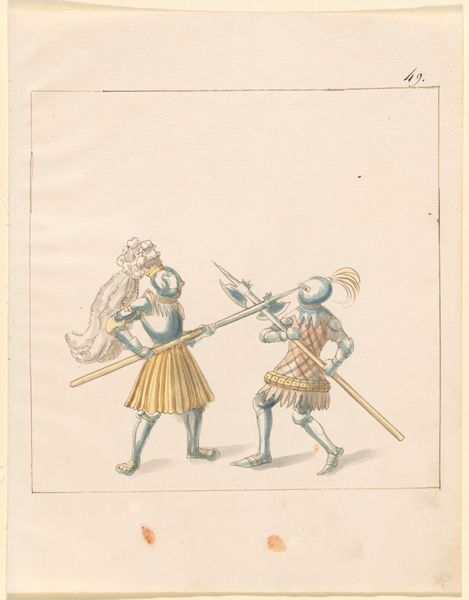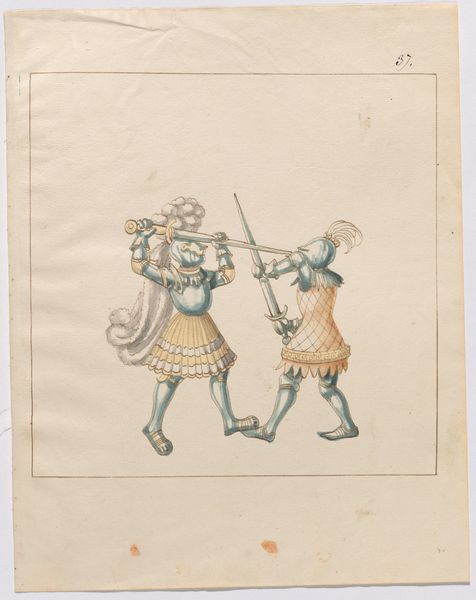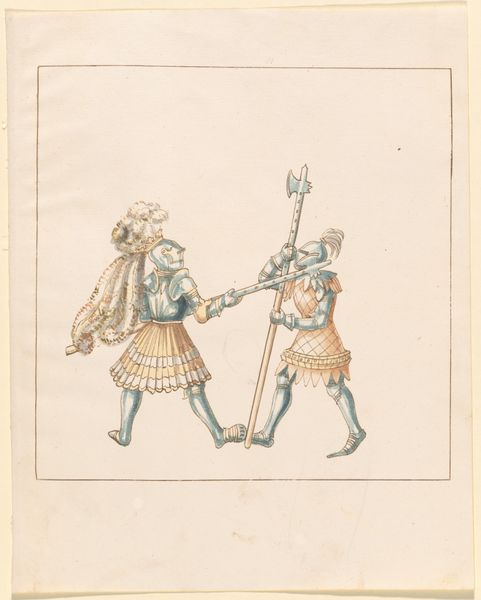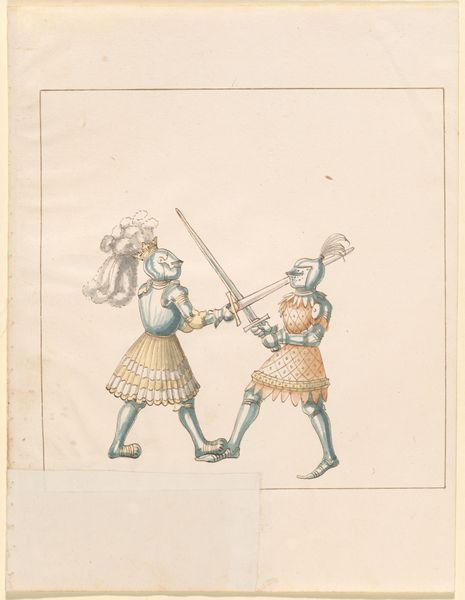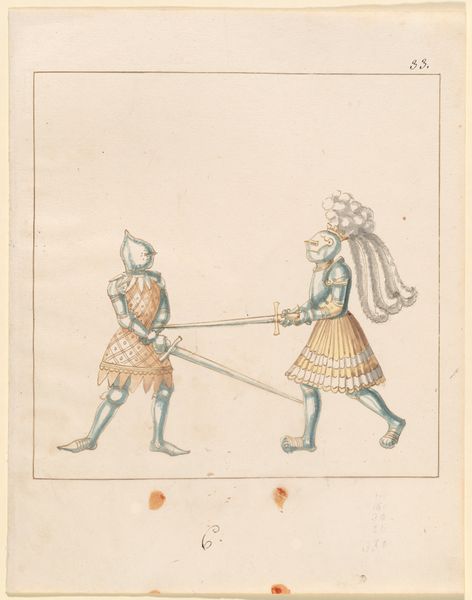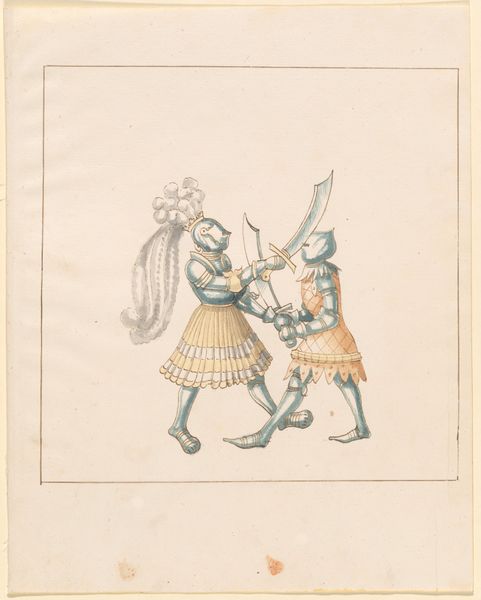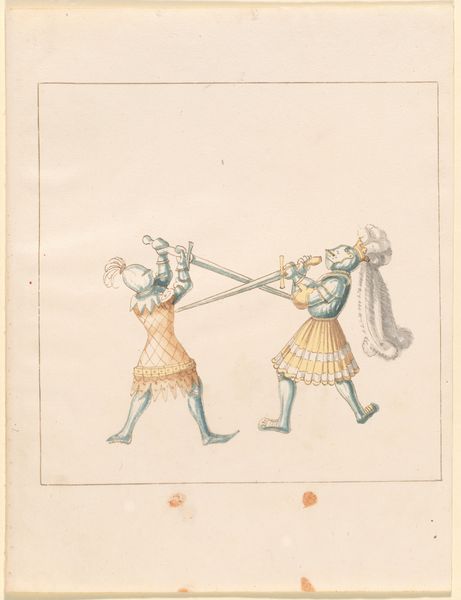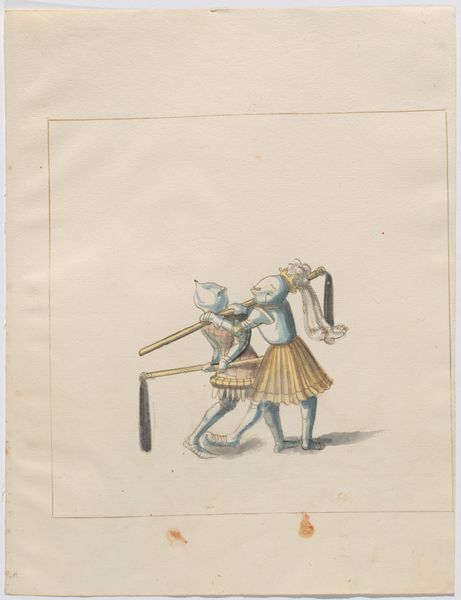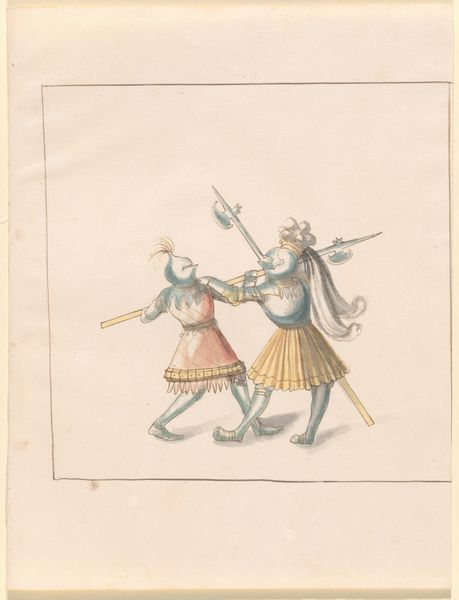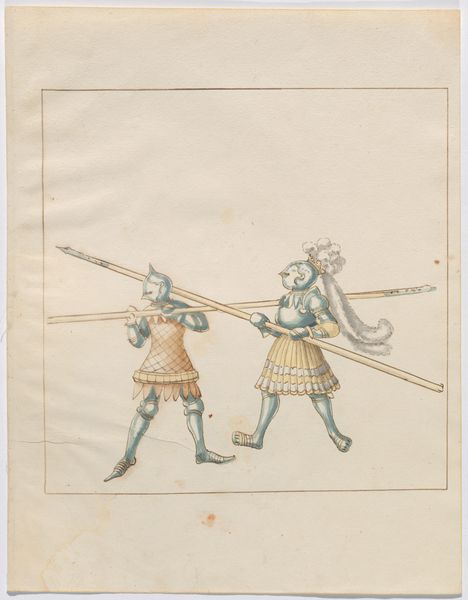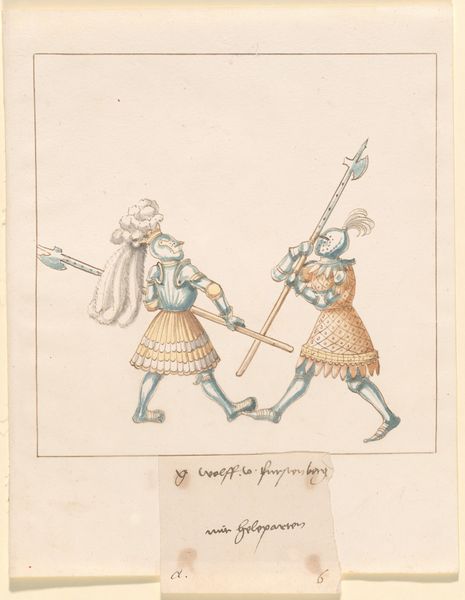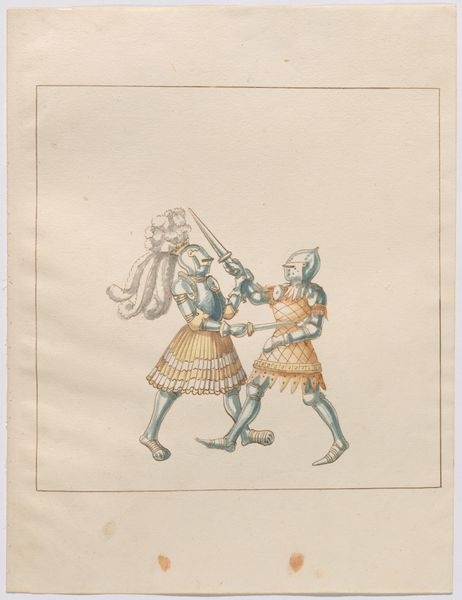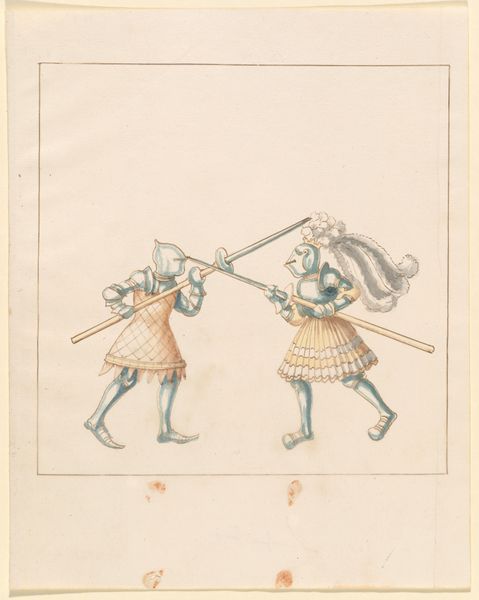
drawing, watercolor
#
drawing
#
water colours
#
figuration
#
11_renaissance
#
watercolor
#
history-painting
Dimensions: sheet: 33.9 × 26.2 cm (13 3/8 × 10 5/16 in.)
Copyright: National Gallery of Art: CC0 1.0
Curator: What immediately strikes me is the formality; these aren’t just soldiers, these are performers. Editor: Absolutely. This watercolor drawing, "Foot Combat with Swords and Buckler Shields", dates back to around 1512-1515. The artist, whose name remains unknown, captured an exercise or demonstration rather than an actual battle, really. The whole activity is governed by specific regulations of courtly engagement and defense, the material and social processes being of foremost significance in the demonstration. Curator: Precisely. You can see the intricate detail given to the armor, each plate meticulously rendered in watercolor; the pleating in their skirts; the enormous plumes; the material status display here is evident. But do we know where this would have been demonstrated, or to whom? Editor: The social context is complex. One must remember the rising political power during the Renaissance era and the culture of ceremony. The ritualized combat was about solidifying hierarchical structures of court and even performing masculinities and notions of valor. Also, in viewing this, I question ideas of justice – and who has access to “fair fights," even in leisure? Curator: That's interesting to ponder when considering the watercolor technique. Watercolor, often dismissed as secondary to oils, finds new expression here with intricate line work bringing both color and detailed rendering together in ways that allow one to explore Renaissance martial aesthetics. I see labor invested here, challenging my own view of that artistic labor. Editor: And in viewing these forms of staged conflict, we must also consider what is being performed to avoid or conceal other forms of actual social unrest. Curator: That's a vital connection to make. The visual display of choreographed dominance as a political gesture for that particular audience—the ruling class and nobles. It’s truly revealing how intertwined art and class struggle really are. Editor: Yes. Looking closer, it reveals how power constructs narratives and social realities within a historic context. Curator: Thank you, I can now go forward with a bit of new thinking. Editor: I'm equally rewarded from considering materiality—how method impacts interpretation and action.
Comments
No comments
Be the first to comment and join the conversation on the ultimate creative platform.
